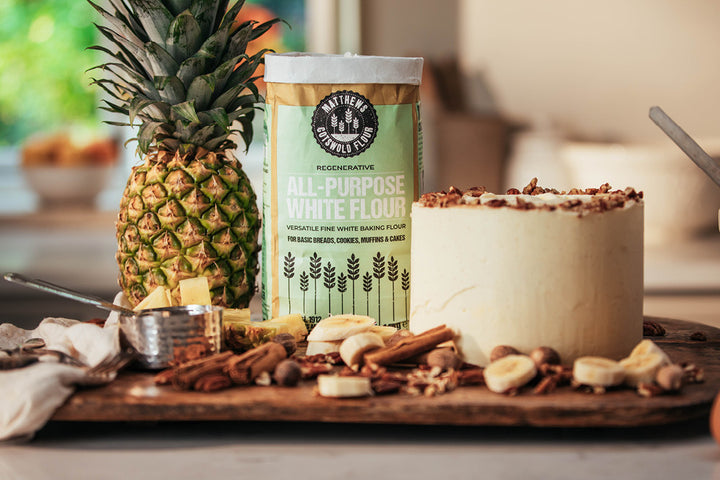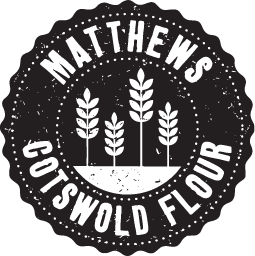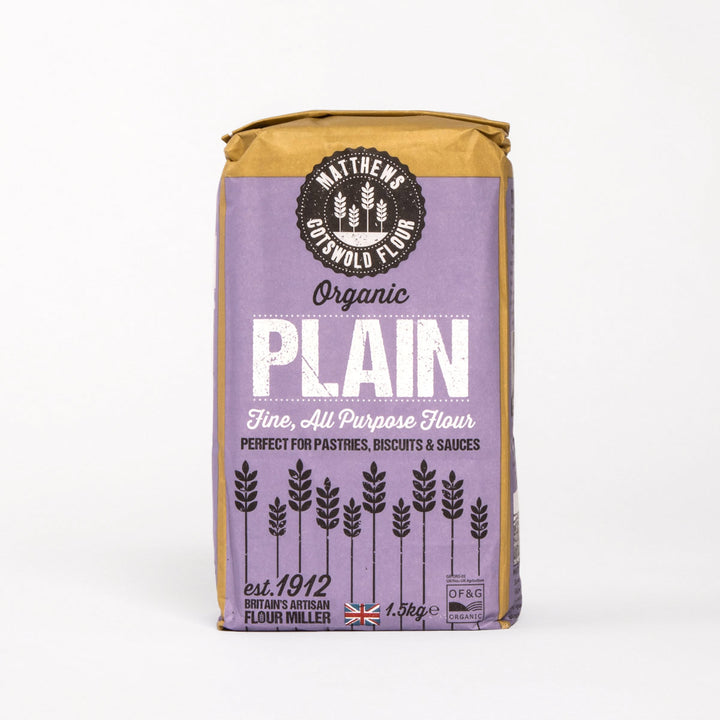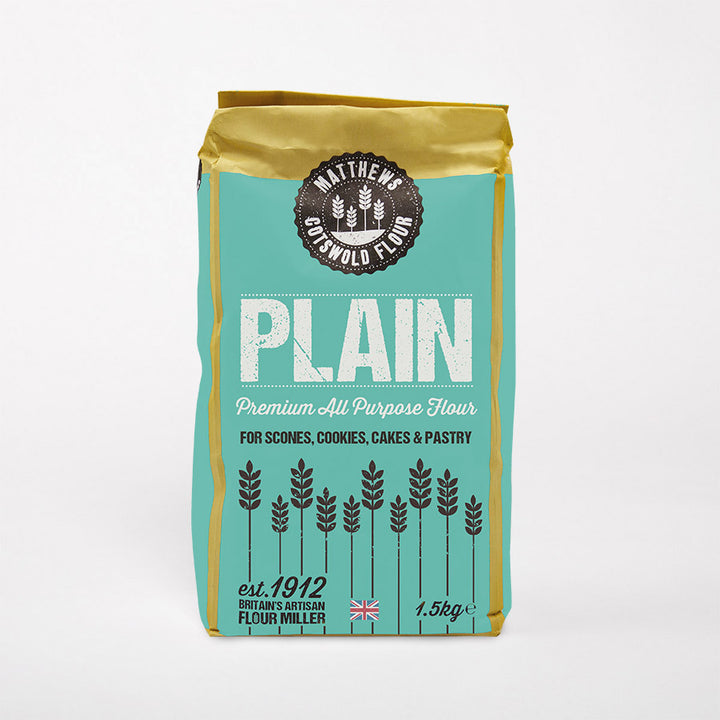What is all-purpose flour and what is it used for?

All-purpose flour is a versatile and general-use wheat flour. It is milled from hard red wheat or a blend of hard and soft wheats, typically at a 80:20 ratio. As the name suggests, all-purpose flour is suitable for all types of baked goods, such as bread, biscuits, pizza, cookies, muffins, etc. It is also used to thicken gravies and sauces.
In the United Kingdom, we often refer to all-purpose flour as plain flour. When you see a recipe from the United States that uses all-purpose flour, you can use plain flour for the recipe. For the first time in the UK, you can now also use true All-purpose Flour.
Our Regenerative All-purpose Flour is milled from a blend of the highest quality soft wheats to a fine consistency and rich in flavour. This flour can be used for making breads, pastry, cakes (with a raising agent), shortbreads, sauces and many more delicious sweet and savoury products.
What is all-purpose flour used for?
All-purpose flour is suitable for most purposes, such as baking, cooking, coating meats, vegetables and as a thickening agent for sauces and gravies. A mixture of hard wheat, which contains more gluten, and soft wheat are ground together to make all-purpose flour. All-purpose flour is versatile, as it contains an average amount of protein. The more protein in the wheat, the more gluten is formed. Gluten provides elasticity to the dough, helping it stretch and trap the gases formed by leavening agents like yeast and baking powder. The dough will naturally rise, resulting in baked goods that look and taste delicious.
What is the difference between bleached all-purpose flour and unbleached all-purpose flour?
All-purpose flour can be bleached, which creates a softer texture. All-purpose flour can also be unbleached, which is the kind we recommend because it provides more structure in baked goods and retains more of the nuance of the wheat.
Bleached all-purpose flour, or flour in general, uses bleaching agents (commonly benzoyl peroxide and chlorine gas, among others) to speed up the flour’s ageing process. This results in a whiter, finer-grain flour with a softer texture. Some people with a sensitive palate can notice a difference in taste of goods made with bleached flour compared to those made with unbleached flour.
The bleaching process softens the flour, which affects the texture and outcome of the finished baked goods. Foods made with bleached flour tend to have a softer texture, more volume, and a brighter colour than those made with unbleached flour. Bleached flour is best for making cookies, pie crusts, quick breads, muffins and pancakes.
Unbleached all-purpose flour, or flour in general, is flour that has aged naturally after being milled. It has an off-white colour, which continues to dull as it ages, and a more dense grain than bleached flour. Our white all-purpose flour or plain flour offers multi-purpose use and is milled from a blend of the highest quality soft wheats to a fine consistency and rich flavour.
Unbleached flour also takes longer than bleached flour to produce, which results in a premium in price over bleached flour.
Having a denser texture, unbleached flour provides more structure in baked goods, which makes it an excellent base for pastry, cakes, shortbreads, sauces and many more delicious sweet and savoury products.
We do not recommend using bleached all-purpose flour or unbleached all-purpose flour interchangeably. Unbleached flour, which takes longer to produce, ages naturally, while bleached flour uses chemical agents to speed up the process. The end result is two types of flour: one with a bright white hue and fine grain (bleached flour) and one that is pale and off-white with a denser grain (unbleached flour). Because of their different textures, each flour produces slight variations in baked goods.

What is the nutritional value of all-purpose flour
Bran and germ are removed from the wheat to produce all-purpose flour or plain flour. Bran contains 76% of vitamins and minerals in wheat. Once bran is removed, the nutritional value of the leftover product is minimal. Whole wheat flour, made of the brown outer layer known as bran, is considered to be healthier than plain flour, since it contains a higher level of dietary fibre. If you want to use flour that contains more vitamins and nutrition, you can bake with flours such as Cotswold Stoneground Light Spelt Flour, Stoneground Strong Wholemeal Flour, or Organic Stoneground Dark Rye Flour.
For our entire selection of flour, visit our flour store!
← Older Post Newer Post →










